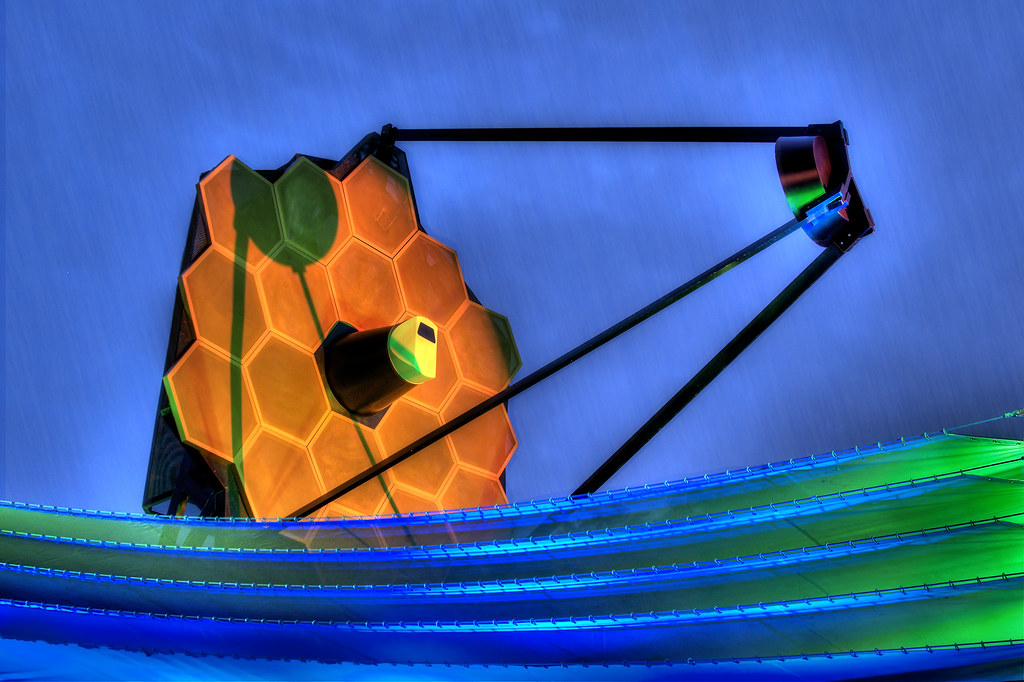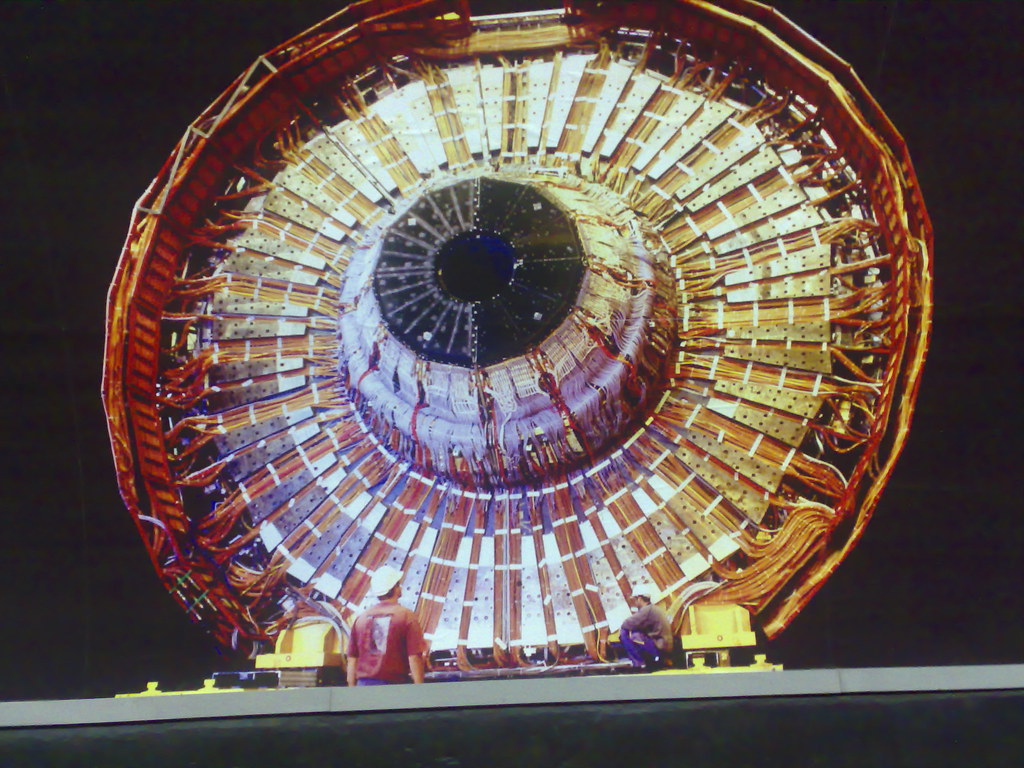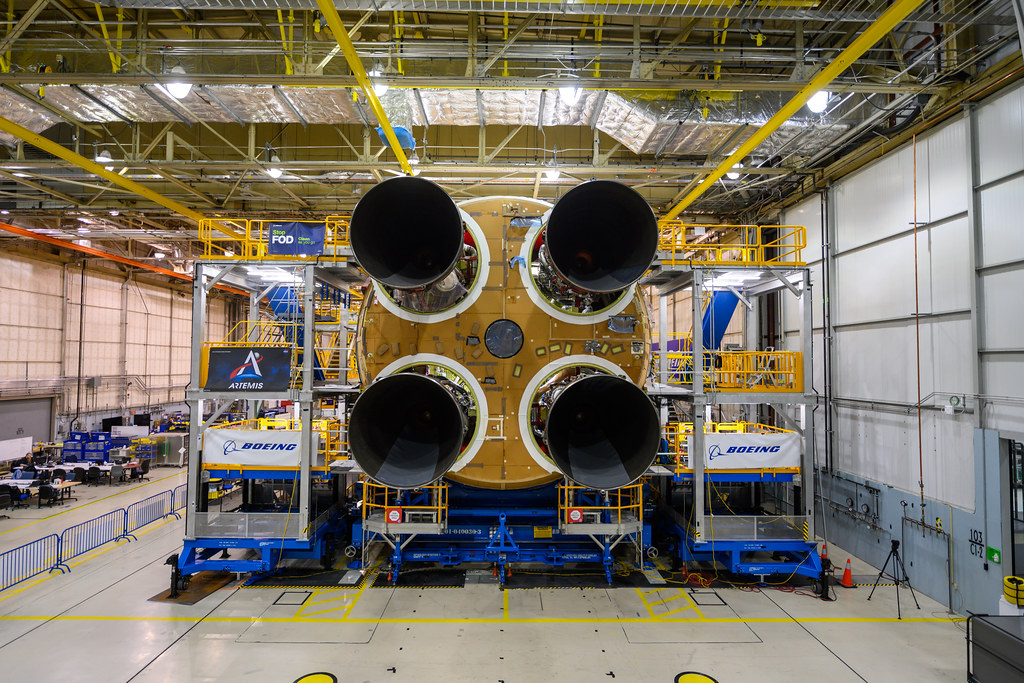
Those of us of a certain age may remember the sci-fi television series Blake’s 7. For those who don’t remember, it was a sort of Star Trek but with a Marxist sub-plot. Anyway, in the later series, their spaceship (unsurprisingly called ‘The Liberator’) was gifted a computer called ‘Orac’. For me, at the time, the fact that Orac could listen and interpret the spoken word and then reply by synthesised human-like speech was the most unbelievable thing about the contraption. A miracle I never dreamt I would witness in my lifetime.
Its second major feature was that it was able to predict, with seemingly pinpoint accuracy, events in the future, a true oracle. So, let’s see if I can play Orac with the scientific discoveries and developments that may possibly occur over the course of this year.
Do feel free to hold me to account in a year’s time. You can contact the editor if you think I’ve forgotten something significant or, alternatively, overstated the impact of something and she will pass it on.
What has already come to pass.
Let’s start with the easy bit. Something even I can’t get wrong. Here we are staring at the end of January, so let’s see what has already happened this year.
A few days ago, the first xenogeneic (involving cells or organs from another species) organ transplant was successfully carried out in which a dodgy human heart was replaced with one belonging to a genetically modified porker. A magnificent achievement, and I can’t help thinking that, one day, we might be able to replace the brains of the Prime Minister’s Cabinet with those from some more quick-witted animal. I’ll leave you to consider suitable donors.
Hopefully, we all saw the launch of the James Webb Space Telescope on Christmas Day last year, the result of a collaboration between NASA, the European Space Agency and the Canadian Space Agency. Between you and me, I breathed a sigh of relief when it successfully cut through the earth’s atmosphere without colliding with a herd of reindeer attached to a present-laden sleigh. Anyway, the launch turned out to be a resounding success. So much so that they needed less fuel than predicted; fuel that can now be used to extend its working life beyond its originally-planned ten-years. Difficult elements of the mission have already been accomplished. The complex 3-dimensional origami of the main reflector has now unfolded and the craft is about to arrive at its parking slot at what is called Lagrangian position 2 (Google ‘Lagrangian positions’: it really is interesting). In about five months’ time, the telescope will have cooled down enough to start its measurements of the cosmos, replacing the old Hubble telescope which is destined for its long overdue and well-deserved retirement. NASA have a wonderful site showing the James Webb telescope’s moment-by-moment progress here.
There’s been a satellite whirling around up there in orbit since 2019 called CHEOPS. Its purpose is to locate exoplanets. These are planets that orbit stars, rather like our own Earth orbits the Sun. We’ve only recently had the technology to locate these tiny earth-like planets which dance in such close embrace with their great, hot, bright suns that are light years away from our home. But, on 11 January this year it found a particularly interesting planet. It was orbiting a star with the riveting name of WASP-103. The little planet (called WASP-103b, in case you’re wondering) shares many of the properties of the planets found in our own solar system. Only it’s not even remotely spherical. It has the shape of a rugby-ball with its long axis pointing at its mother star as it orbits it in less than one earth-day. No one thought an ellipsoid planet even existed before this month.
And in the last of our ’what has already happened’ section, just a few days ago, a team from the University of Montreal, Canada created… the world’s tiniest antenna. It’s about 20,000 times smaller than a human hair and built from DNA genetic material. Its primary purpose is to track the motion of protein inside cells by a process not dissimilar to radar. But this could also be the first building blocks towards nanoscale computers and other nano-machines, as well as being exploited in the early detection of cancer and in the development of new drugs.

Large Hadron Collider (LHC)
The LHC has, for the last couple of years been having a bit of a well-deserved break after all its hard work locating the Higgs Boson. It was about half a century ago that Peter Higgs and his colleagues first proposed that there may be a tiny quantum particle which, uniquely, is responsible for things – all things – having a weight. The LHC ‘staycation’ was scheduled but Covid lockdowns rather protracted the planned break.
The confirmation of the existence of the Higgs Boson answered many questions about the reality of matter, but unfortunately it also raised more significant dilemmas than it answered.
So, when they flip the switch on the LHC in just over a month’s time, it will be much more powerful and effective than the pre-Covid version of the LHC. Hopefully, the upgrades will enable it to answer those outstanding questions, leading to a better understanding of how the cosmos ticks.
Rise of the Supergrid
If you haven’t heard of supergrids so far, I guarantee it’ll certainly be a ‘thing’ by the end of the year. Pioneered by India, it’s a means of connecting renewable energy sources together by long powerlines, the aim being to smooth out the variable and transient flow of electricity on the local grids. The issue was raised at COP26 when India announced its plans to export its solar energy around the world, called the ‘One Sun One World One Grid’ initiative. India is even now on the way to exporting their solar energy to countries in The Middle East.
Now, more than 80 countries are considering working in an alliance interconnect, linking solar, wave, tidal and wind generators across continents. The UK already uses a 725km undersea cable to import electricity from Norway’s massive hydropower suppliers. Now, they plan to use the same cable to export electricity from our own wind farms in the North Sea back to Norway, where it can then be fed onto a European supergrid.
There is also talk of creating an ‘energy island’ in the North Sea; a vast hub of offshore wind farms which will feed into several European countries. This year, a company called, XLinks, is creating links from the vast solar farms in the Australian outback to Singapore as well as other distant lands. XLink is also planning a… wait for it… 3800km link, between the extensive wind and solar farms located in Morocco, all the way to the UK.

Quantum Computers
Quantum computers represent a very different way of computing. They make use of the weird quantum states of tiny particles trapped in stasis. They handle information in a fundamentally different way to normal computers which work by flipping between two electronic states of ‘on’ and ‘off’ (or ‘0’ and ‘1’). By contrast, Quanta have three states: ‘0’, ‘1’ and, err, something quite bizarre called superposition (a sort of ‘0’ and ‘1’, but both at the same time).
I mention quantum computers as being significant in 2022, not because they are going to be some sort of fantastic software silver bullet that can massively increase our computing power, but because development has been so fast over the last couple of years, I predict they are now ready to cut through to mainstream computing and mainstream computer news stories. The truth is, the type of computer problems they can solve at the moment are limited but significant. But they hold the key to solving long-standing, complex problems with an efficiency traditional computers couldn’t even dream of, even ones with the power of Orac.
At the moment development is focussing on something called ‘quantum supremacy’. This is the point at which a quantum computer can beat a traditional computer on some benchmark problem. Arguably, we reached this point in 2020, but the benchmark chosen then was not considered realistic or useful. This year – and here’s my big prediction – we’ll achieve quantum supremacy on a useful, practical benchmark challenge, such as cracking a high-end security code or achieving some clear business computing advantage.

Covid-19 Evolution
We have learnt much over the last couple of years about Darwinian evolution albeit, for most of us, only in the specific area of coronavirus mutations. So far, we have seen four major strains ‘of concern’ take hold (beta, gamma, delta and, currently, omicron) but there have been thousands of others that, thankfully, didn’t make the grade. The newer variants seem to be much more transmissible; their aim being to infect as many humans as possible before the antibodies and vaccines begin their retaliation. There is a limit to how infectious the virus can become but, even though they may be less deadly, they will become better at evading our immune responses with or without vaccine protection. Undoubtedly, over the years, Coronavirus will become more and more like flu, existing in various forms at the same time and demanding a cocktail of vaccines in a single jab to keep them all at bay.
On the negative side, this stabilisation of the pandemic may take 50 years or more, especially if we continue to ignore prioritising the developing world for full vaccination. There’s little evidence of the virus transferring readily from human to animal and vice versa. If it did – and it might in the future – that could make matters much worse, as our pets and local wildlife become a major carrier for human-human transference. [Note: there have been documented cases of gorilla-human transfer and human-mink transfer, but as I say, it’s rare at the moment].
In summary, this year, I’d be surprised if we don’t see another variant of note which will require a fourth or even fifth jab before the year is out. We should hope for nothing worse, but be preparing for that possibility. However, as they say, we are where we are.
[If I could add a personal note here. Regardless of the various and changing advice from different sources (and the examples that seem to be set by our Government), please do continue to wear a mask in confined spaces, keep up the social distancing where at all practicable, wash yer mits regularly, and get jabbed just as soon as you’re eligible. The number of very sick people with Coronavirus is reducing, but it’s far from insignificant, and you don’t want to be that person needing a ventilator or, indeed, inadvertently to pass your virus onto an extremely vulnerable person. Lecture over. Thank you. More here]
[Stop Press: Only today the BBC reported here the culling of thousands of hamsters in Hong Kong due to 11 in a pet shop being diagnosed with the Delta variant. Sadly, that will be my first correct prediction of the year!]

Space Events
Planned space events this year include the launching of the first massive Artemis rocket in February. This one will launch a capsule into a highly elliptical orbit around the moon. Capsules that are launched later in the Artemis Series will contain a four-person crew, searching for water at the Moon’s south pole in preparation for the first lunar colony. NASA is also planning to launch a flotilla of robot missions starting this year, with the intention of mapping the moon and those all-important water deposits. Water is not only essential for astronauts’ hydration but the oxygen/hydrogen content of water can be turned into rocket fuel. Russia, India and (maybe) South Korea also have the moon in their sights for 2022.
One more Mars crawler, the Rosalind Franklin Rover, will be launched into space around 22 September and will hopefully make a soft landing next year on the alien planet. This one is a joint European/Russian venture and its task is to discover evidence of primitive or extinct life forms deep under the surface of the planet. The Perseverance Rover (the one with that really cool drone), currently wandering around the Martian surface can only drill down about 6cm to find its samples. The Rosalind Franklin will hopefully dig down 2 metres to see what exists below the radiation-damaged surface.
Asteroids have not been forgotten this year either. Last year, NASA launched an anti-asteroid defence probe which, this year, will smash into an asteroid’s moonlet called Dimorphos. Apparently, it’s about the size of a football stadium, but whether they are referring to Wembley or St James’ Park, I do not know. The craft, on the other hand is about the size of a car (Ford Ka or Isuzu? Who knows?) and weighs 600kg. It will hit the moonlet in September (September is a busy month for rocket activity it seems) at around 15,000mph, hopefully with enough energy to change the moon’s direction of travel. If the mission is a success, many more, and bigger probes will be manufactured by several countries with the sole intention of preventing Armageddon, should we detect something large and incoming.
As far as manned flights are concerned, Boeing will have a third attempt at launching its Starline Crew Capsule to the International Space Station early this year. If successful, it will be used in the rota to ferry astronauts to and from the International Space Station. Meanwhile, China is expected to complete its own space station Tiangogn (Heavenly Palace) with three launches this year. Manning of the ‘Palace’ will take place either late this year or early next year.
Meanwhile, Space Tourism will take another ‘giant leap’ forward with both Jeff Bezos’s Blue Origin and Richard Branson’s Virgin Galactic offering more commercial rides, so those few who can afford it can experience near-weightlessness. You may remember when, last year, Captain Tiberius Kirk had a joyride with Elon Musk. I did write about my thoughts on the subject in West Country Voices here.
And finally, a sundry assortment of odds-n-sods:
The UN Biodiversity Conference has already been postponed three times due to Covid. Let’s hope it’s fourth-time lucky with their plans for part-virtual/part in-person affair in April this year. They have much to catch up on as well, and many problems to tackle arising from the COP-26 Conference in Glasgow last year. Deforestation and slowing the decline of wildlife habitats globally will be top of their list.
COP-27 is scheduled for November this year in Sharm El-Sheikh, Egypt, and will hopefully follow on from the issues tackled at the UN Conference, but with greater emphasis on the impacts of global warming.
Artificial Intelligence. AI is now established in all aspects of our life, whether it’s in the way we work, the way we socialise, what we enjoy doing, where we go and how we get there. Algorithms impact our lives in more ways than we can imagine. For the most part, they work successfully. But there is one very serious imperfection we had foolishly not foreseen, and I believe, and hope, that it will be addressed this year. The problem is that AI can be as bigoted, narrow-minded and xenophobic as… we humans who made it so often are. There is much evidence of apparent bigotry and intolerance such as the original Google facial recognition system thinking black people were gorillas, algorithms used in dating programs and choosing applicants for jobs favouring males or people from what a human might perceive a ‘good background’. How this has happened is understandable. One reason is that the demographic of the computer programmers reflects in the work they create. Secondly, AI usually needs massive data sets to learn from. Often these data sets are old and don’t reflect a modern profile. These more moral and ethical aspects of AI will certainly be considered this year. The Online Safety Bill, currently before parliament will hopefully bring these issues to the forefront of future AI developments.
The Digital Divide. Three years ago, no one had heard of Zoom. Videoconference calls were a rarity and usually subject to numerous drop-outs, blank screens and pink circles. But since the pandemic, video calls have taken over as a major form of business communication. During actual lockdown, schools even established video as their main educational delivery mechanism. Two things: one good, one bad.
First, the good aspect is how robust our internet infrastructure proved to be, with little need for upgrades. Not only could we hold a fairly successful on-line meeting of many people individually located in distant work spaces, but tens of thousands of similar digital conferences could be taking place and simultaneously, without the digital lines getting overloaded.
Now to the bad bit. Heavy educational reliance on the internet highlighted a big problem. Families who couldn’t afford computers for their children were at a disadvantage. Parents who previously had to choose between, say, food or heat, now had that third decision. Should they pay for a monthly broadband bill so that their children could keep up with their peers. This levelling up issue is currently being addressed by the Government anyway, but any developments will surely be given a boot up the rear end if there’s a chance of us being subject to yet another lockdown.
Veganuary is definitely a thing despite the ridicule from the likes of Tim Martin and his chain of cheap, all-you-can-eateries. Have you tried vegan food? Never mind the morals, I’d really suggest you give it a whirl. These days you honestly can’t tell the difference from what it purports to be. And if you can, it’s only because it’s actually better than the real thing. This is all thanks to algae and protein developments over the recent years. Animal agriculture is the second biggest emitter of greenhouse gasses after fossil fuel. As a consequence, investment in what is called alternative protein is environmentally sustainable and will offer climate solutions as well as opportunities for economic growth. I’m hoping this year, the consumer will recognise the very impressive advantages of re-engineered legumes, lab-grown meat, algae and alternative proteins and think ‘Oh, yum!’.
And that’s my list for this year. Let me know what you think. Have I left anything out? Do you think I’ve overstated the potential impact of something? Let’s readdress this at the end of the year then and see how well we did.





